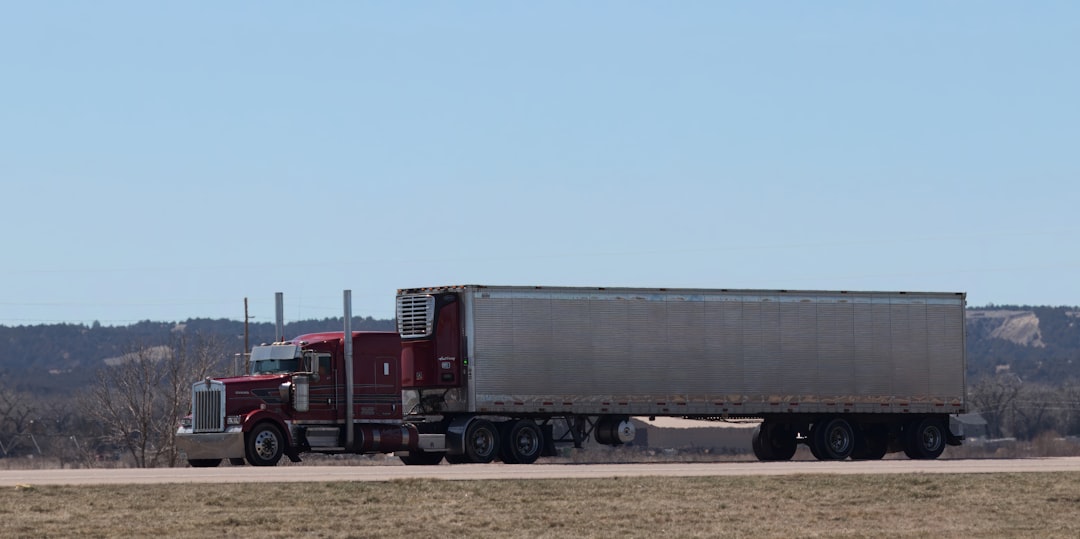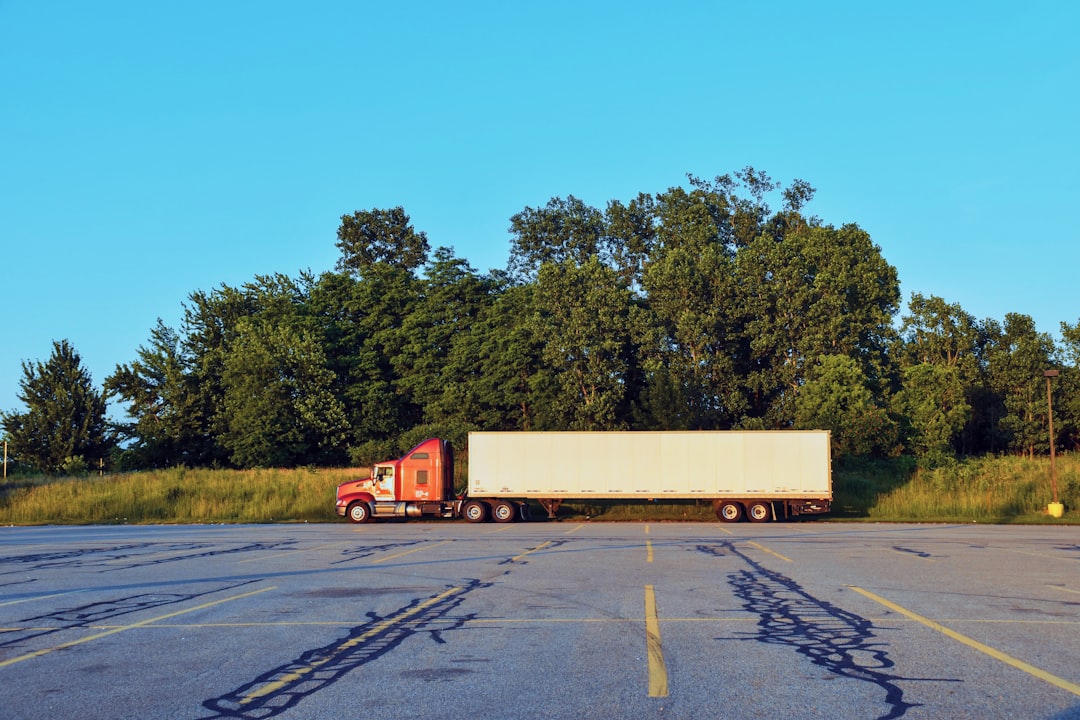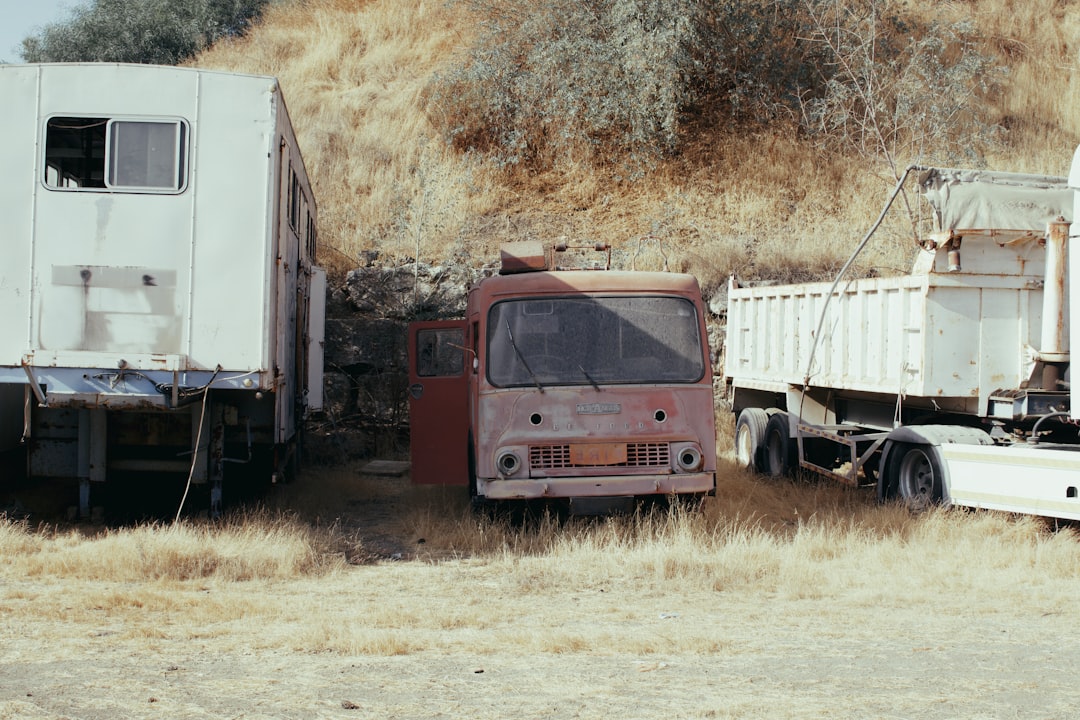

Engage prospects with a scan and streamline customer engagement with FREE QR code marketing tools by Sona – no strings attached!
Create a Free QR CodeFree consultation

No commitment

Engage prospects with a scan and streamline customer engagement with FREE QR code marketing tools by Sona – no strings attached!
Create a Free QR CodeFree consultation

No commitment
Today’s digitally connected market poses a challenge for cargo trailer dealers: it is difficult to convert high-potential offline interactions into actionable leads that drive business growth. With buyers researching custom trailers, comparing financing, and seeking easy access to specs, dealers are under pressure. If they fail to capture and track every prospect, valuable opportunities can be lost, especially when high-intent visitors interact in person but leave without sharing their information.
QR codes in marketing have become a practical bridge for this persistent disconnect. Instead of relying on outdated, error-prone paper sign-ups or merely waiting for prospects to initiate contact, dealers now create instantly accessible digital touchpoints. Placing QR codes on signage or brochures, or even trailers themselves, allows prospects to browse model specs, request financing, or explore warranty information directly from their smartphones, improving both customer experience and lead capture accuracy.
When QR codes are embedded at every key stage of the customer journey, dealers can connect in-person moments with digital systems. This enables actionable analytics, tailored retargeting, and ensures that offline interest no longer goes unnoticed. The result is an increase in revenue and strengthened lead nurturing.

Cargo trailer lots, showrooms, and events generate significant foot traffic, yet traditional lead capture relies heavily on paper forms, printed brochures, and verbal follow-ups. These analog processes create gaps that result in lost or untracked leads. A salesperson may have a great conversation with a contractor or fleet manager, but if contact details are not captured accurately at the moment of interest, that opportunity can slip away. QR codes make it effortless for prospects to self-identify and progress digitally while standing next to the trailer they like.
By turning static materials into interactive gateways, you digitize the entire journey. Prospects can scan to view specs or save your contact. Sales teams can be alerted in real time, and every scan can be attributed to a placement, campaign, or model line. This transition from paper to pixels improves data quality, response speed, and downstream conversion.
With this approach, every surface becomes a conversion point, and every conversation can be supported by instant digital follow-up. The result is a measurable lift in lead volume and quality, shorter response times, and stronger attribution across your sales and marketing efforts.

Cargo trailer buyers often begin their journey offline. They walk the lot, peek inside trailers, and grab brochures. Without a digital bridge, many of those moments are invisible to your systems. QR codes remove friction by enabling one-scan actions that capture interest in the moment and connect it to your CRM. They also enable the flexibility to update content as inventory and promotions change, which keeps printed materials useful longer. For a broader view of value, see these QR marketing benefits.
Beyond convenience, QR codes deliver measurable insights. Every scan creates a data point—the time of day, the placement that drove action, the device used. Dealers can see which models attract interest, which events generate real leads, and which offers convert. These insights inform inventory planning, merchandising, and ad creative, reducing wasted spend and capturing more revenue from existing foot traffic.
When QR codes are woven into dealership operations, they transform anonymous foot traffic into identifiable, marketable audiences, creating a tighter connection between marketing activity and sales results.

Cargo trailer dealers benefit most from QR formats that enable fast research, clear contact capture, and easy follow-up. The goal is to connect the buyer to the next best action with minimal friction while collecting useful data for sales and marketing.
Start by mapping your typical buyer questions to the right format and destination. Contractors may care about payload, floor options, and lead times; recreational buyers may focus on towing requirements and accessories; fleet managers may need financing options and warranty terms. Selecting the right QR format ensures each audience gets what they need immediately.
For most dealerships, web links for research and forms, plus dynamic codes for campaigns and inventory shifts, deliver the highest value. Sona QR lets you create, manage, and update these formats centrally, so your codes remain relevant as your marketing evolves.

Growth comes from being present at the exact moments buyers seek clarity. On the lot, in the waiting room, at events, or while driving by your billboard, buyers constantly encounter your brand. Without a digital onramp, many of those moments pass without generating a lead. QR codes placed strategically convert curiosity into trackable action.
Consider every high-traffic location and each stage of the buying journey. Make it effortless to go deeper: from a spec sticker to a comparison page; from a financing poster to a pre-qualification form; from a service counter sign to a maintenance request. When scanning is the fastest way to get what they want, engagement rates rise.
Systematic placement at these touchpoints turns anonymous traffic into first-party data while offering immediate value to buyers. Over time, scan data will reveal which locations and messages drive the most qualified leads.
QR codes are most effective when they align with common buyer tasks and dealership workflows. Focus on a handful of high-impact use cases first, then scale as you collect performance insights.
Prospects want clear answers fast: payload capacity, dimensions, financing terms, delivery timelines, and accessory options. Service customers want easy scheduling and transparent maintenance information. Map each of these needs to a QR journey that surfaces the right content and captures intent.
These use cases surface previously hidden signals. Sales teams can personalize follow-up based on the exact code scanned, and managers can invest more confidently in the placements and offers that drive real outcomes.
Each scan is more than a visit—it is a behavioral signal. By deploying unique QR codes at different stages of the journey, you can segment prospects automatically and tailor your follow-up to their intent. Over time, you build a first-party data asset that improves targeting, messaging, and conversion, powered by intent data that clarifies buyer readiness.
Cargo trailer buyers often fall into clear segments, such as contractors, recreational users, motorsport owners, and fleet operators. They also vary by lifecycle stage: first-time shoppers, in-market buyers, recent purchasers, and service customers. Tagging scans by placement and action helps you nurture each group differently.
In practice, this means a contractor who scans a payload comparison at noon on a weekday can receive a different follow-up than a motorsport enthusiast who scans accessories on a Saturday. The right message at the right time turns scans into conversations and conversations into revenue.
QR codes connect offline materials to digital journeys, making your mixed media strategy cohesive and measurable. When you include QR codes across print, out-of-home, events, and even social content, you gain both immediate engagement and a single source of truth for attribution. See these dealership QR strategies.
For cargo trailer dealers, this integration clarifies which placements are pulling their weight. You will know whether that new set of lot signs or the trade show sponsorship actually drove qualified leads. Centralized analytics highlight what to scale and what to cut, so your budget follows performance rather than assumptions.
QR codes serve as the offline onramp to your digital engine. With a platform like Sona QR, you can manage every code, monitor performance across channels, and sync scan data to your CRM to power continuous optimization.
A disciplined rollout ensures your QR program moves beyond novelty to measurable impact. Start with a clear business goal, choose the right code types, design for scannability, deploy in high-intent locations, and optimize based on data. The steps below apply whether you are launching a model comparison campaign on the lot or a financing pre-qualification push at events.
Treat each campaign as a test-and-learn cycle. Use separate QR codes per placement so you can compare performance. When you find a winner, scale it across formats and locations.
Start creating QR codes for free: https://www.sqr.me/register
Executing these steps builds a repeatable process for turning physical touchpoints into digital conversions. Over time, you will accumulate benchmarks for your dealership and make smarter decisions about creative, placement, and spend.
For many dealers, tracking begins and ends with foot traffic estimates or brochure counts, leaving a blind spot between marketing activity and real sales outcomes. QR codes give you the instrumentation to follow every interaction from first scan to closed deal or service ticket. When scans are tied to placements and campaigns, you can attribute pipeline and revenue to specific efforts and optimize with confidence. To connect offline touchpoints with measurable outcomes, explore offline attribution.
Modern tools make this practical. With Sona QR and Sona, you can capture detailed engagement, connect scans to CRM records, and visualize multi-touch journeys across offline and online channels. This visibility transforms QR codes from a convenience feature into a performance marketing asset.
When every offline interaction is measurable, marketing and sales can align around the same goal: converting interest into revenue efficiently. The feedback loop is fast, objective, and actionable.
As your QR program matures, subtle improvements in design, placement, and process can unlock outsized gains. Focus on clarity of value, data hygiene, and operational readiness. The best-performing campaigns convey exactly what a scan delivers, route prospects to mobile-first experiences, and trigger timely, relevant follow-up.
Pair these best practices with creative deployments that match dealership rhythms. For example, add a QR code to a price sheet that opens a short video walkthrough of that trailer, or place a QR label near the hitch area that opens a towing capacity guide and accessory recommendations. Durable, high-contrast QR code decals can help with long-term outdoor placement.
These steps help eliminate anonymous visits and slow follow-up. They also ensure that your QR investment translates into better customer experiences and measurable business outcomes.

Dealers across regions and sizes are using QR codes to close the gap between interest and action. While every market differs, the common thread is the same: make scanning the easiest way to get value, and then measure what happens next. Here are patterns you can adapt to your store and audience.
Look for opportunities where buyers hesitate due to missing information or friction. Then place a QR code that removes that friction. Over time, the data you collect will surface the most persuasive messages, the highest-yield placements, and the follow-ups that convert.
Innovative dealers also use QR codes for owner reviews, referral bonuses, or appraisal incentives. These programs extend the value of a scan beyond the first sale, supporting reputation growth and repeat business.
QR codes are simple to print but nuanced to master. Results depend on aligning the message with the moment, ensuring scannability, and providing a frictionless landing experience. Avoid treating QR codes as an afterthought on a cluttered sign. Make them central to the action you want the buyer to take and make the reward immediate. For creative ways to deploy across ad surfaces, see how to integrate QR into marketing.
Plan for change as well. Inventory shifts, seasonal promotions, and evolving buyer behavior will demand updates. Dynamic codes, strong analytics, and a culture of testing protect your investment and keep your program agile.
Addressing these pitfalls ensures your QR program is a growth engine rather than a short-lived experiment. The right process will keep performance improving month after month.
For cargo trailer dealers, QR codes are more than a digital shortcut—they are essential for overcoming industry pain points like lost or anonymous leads, failed attribution, and untracked engagement. By incorporating these solutions, every offline interaction can be transformed into actionable data, moving prospects into targeted nurturing flows.
The result is a more connected customer journey, higher lead quality, and the ability to attribute revenue to specific campaigns, touchpoints, and tactics. As technology advances, dealers who adopt and integrate QR strategies will be positioned to capture modern buyers and drive continuous growth in a competitive market.
QR codes have revolutionized the cargo trailer dealer industry by turning traditional lead capture into an efficient, data-driven growth engine. Whether it’s streamlining customer acquisition, enhancing the buying experience, or providing instant access to detailed product information, QR codes enable dealers to engage prospects seamlessly and gather valuable insights with every scan. Imagine knowing exactly which trailers, promotions, or marketing materials generate the most qualified leads—and being able to optimize your strategy instantly.
With Sona QR, you can easily create dynamic, trackable QR codes that update in real time without the hassle of reprinting, ensuring every campaign stays fresh and relevant. Connect scans directly to your sales pipeline, measure engagement precisely, and convert interest into closed deals faster than ever before. Start for free with Sona QR today and transform every scan into a powerful lead-generation opportunity.
Cargo trailer dealers benefit most from QR codes that enable fast research, clear contact capture, and easy follow-up, such as web links to model details, vCards for saving contacts, SMS or email triggers for quote requests, PDF downloads for specs and warranty info, and dynamic QR codes for updating promotions and inventory.
By placing QR codes on lot signage, trailers, brochures, and events, you enable prospects to instantly access specs, request financing, or schedule service, converting offline interest into digital leads that feed directly into your CRM for faster follow-up and better data accuracy.
Dynamic QR codes allow dealers to update the linked content instantly without reprinting materials, run A/B tests, add tracking parameters, and attribute scans by placement and campaign, making marketing efforts more flexible, measurable, and cost-effective.
High-impact placements include lot signage and model decals, finance desk placards, service check-in counters, brochures, event booths, billboards, vehicle wraps, and waiting rooms, ensuring codes are where buyers seek information or make decisions.
QR codes act as a bridge by enabling one-scan actions that capture buyer interest in real time and connect that data to CRM systems, allowing dealers to track engagement, personalize follow-up, and measure the ROI of offline marketing efforts.
QR codes can link to mobile-optimized model specifications, comparison tools, financing pre-qualification forms, downloadable spec sheets and warranty cards, videos, appointment scheduling, and customer service requests.
Dealers can place QR codes on financing displays to route buyers to mobile pre-qualification forms, speeding up sales cycles, and on service documents or decals to allow easy maintenance requests and warranty registrations, enabling proactive upsell and better service management.
QR codes provide detailed data such as scan time, device type, location, and source campaign, enabling dealers to measure engagement by channel, respond in real time, attribute revenue to specific marketing actions, and sync scan data with CRM platforms for lead scoring and pipeline visibility.
Design codes with clear branding, high contrast, and visible calls to action, test scannability under real conditions and various devices, adjust size and placement for indoor and outdoor lighting, and educate staff to encourage customers to scan.
Start by defining your business goal and matching it to a buyer intent-driven call to action, choose static or dynamic codes based on content needs, design and test for scannability, deploy codes in high-intent locations, and track performance to optimize and scale winning campaigns.
Use Sona QR's trackable codes to improve customer acquisition and engagement today.
Create Your FREE Trackable QR Code in SecondsJoin results-focused teams combining Sona Platform automation with advanced Google Ads strategies to scale lead generation

Connect your existing CRM

Free Account Enrichment

No setup fees
No commitment required

Free consultation

Get a custom Google Ads roadmap for your business






Launch campaigns that generate qualified leads in 30 days or less.
